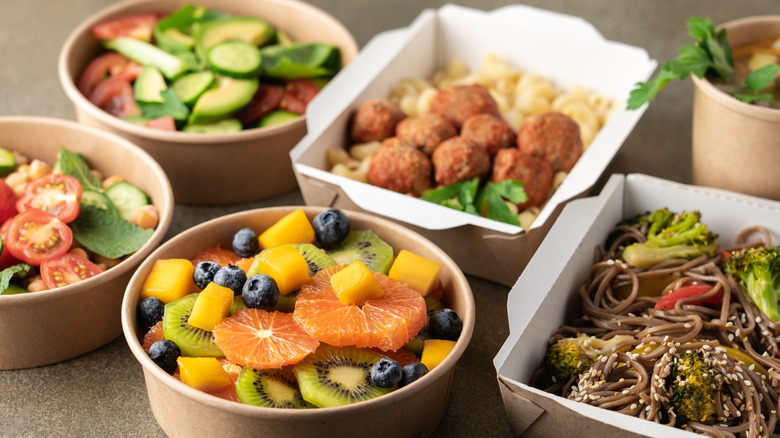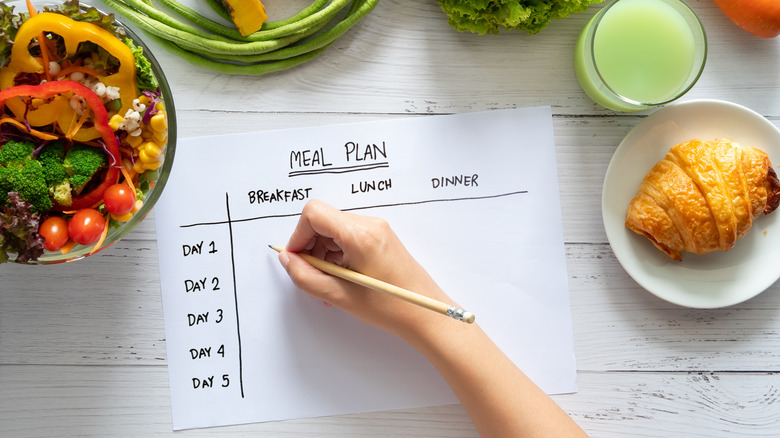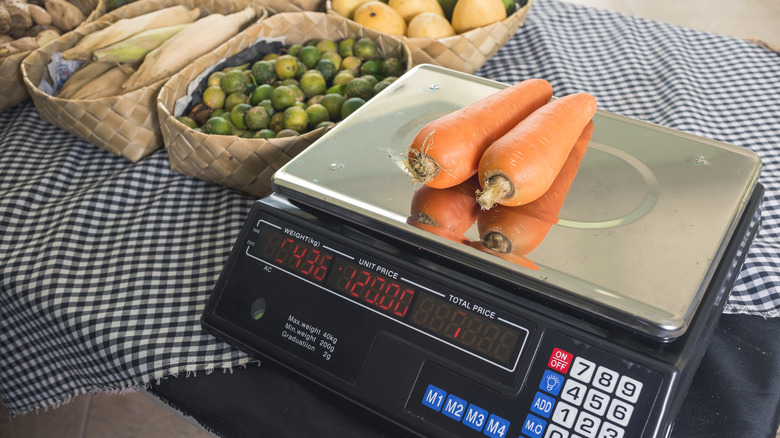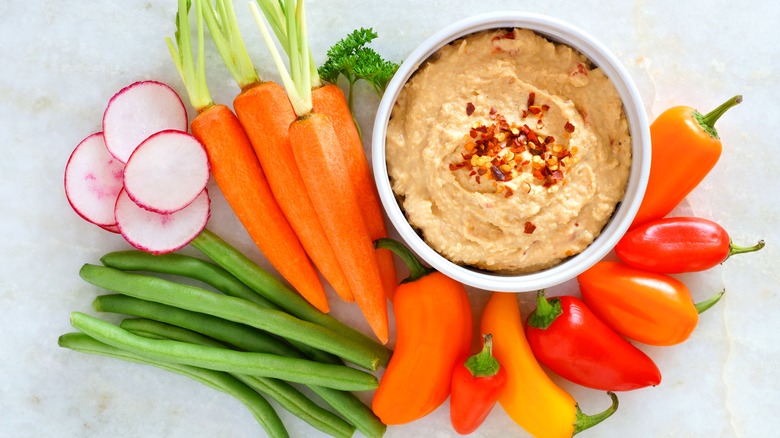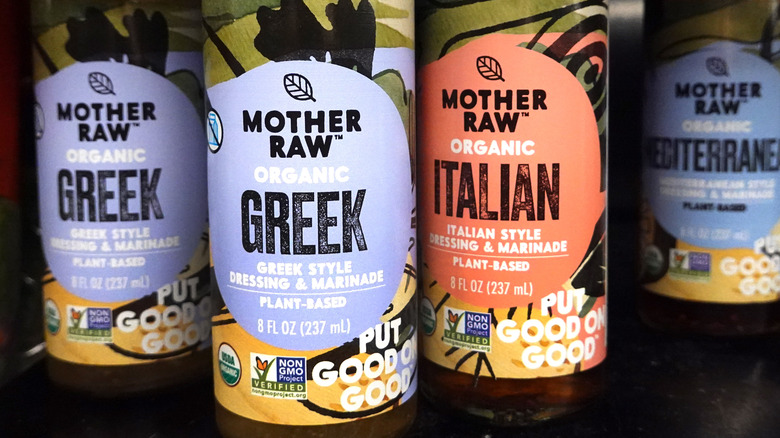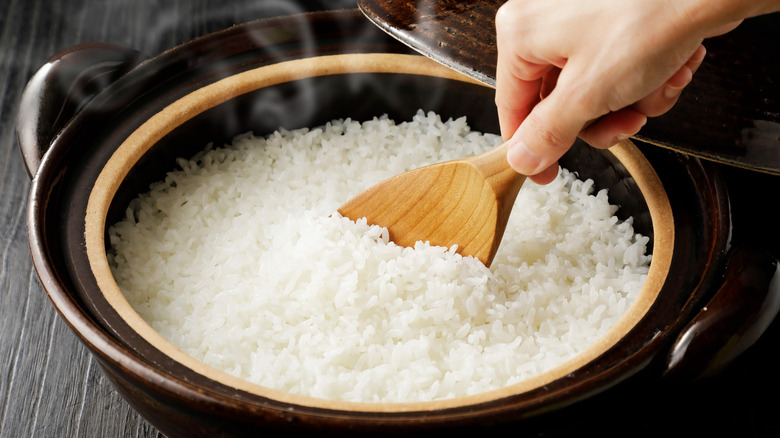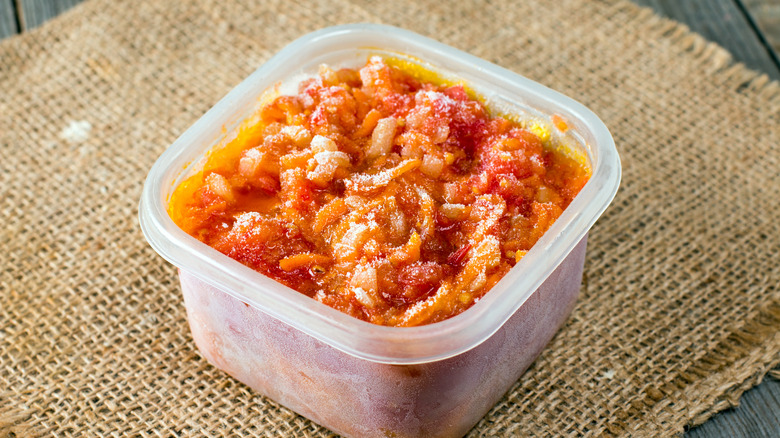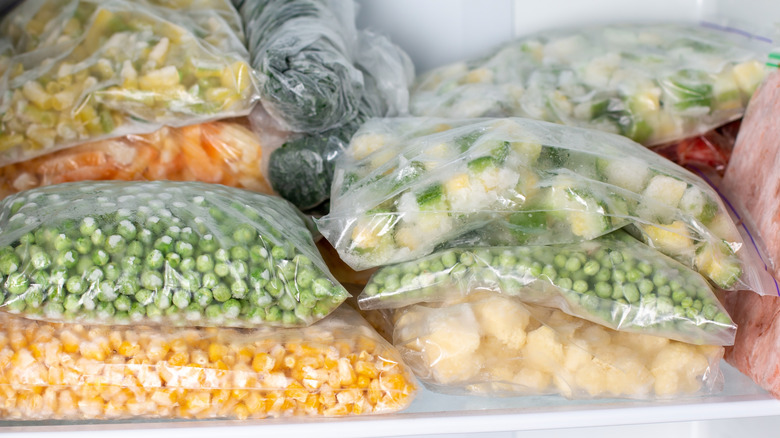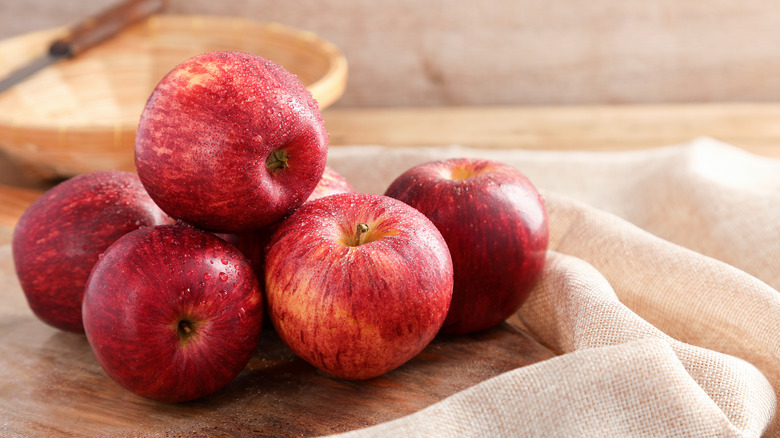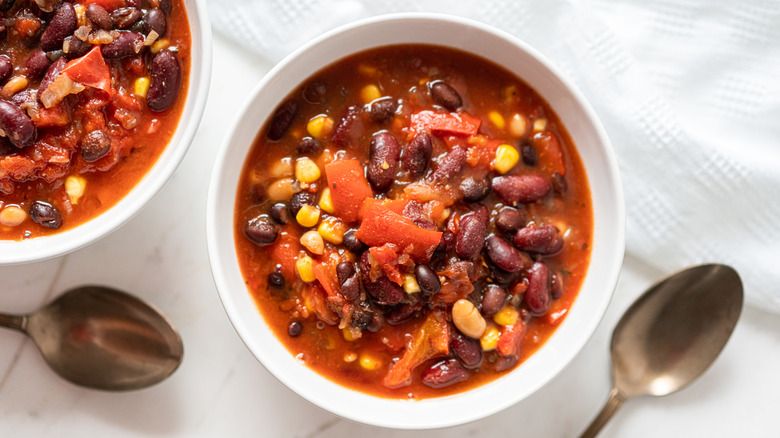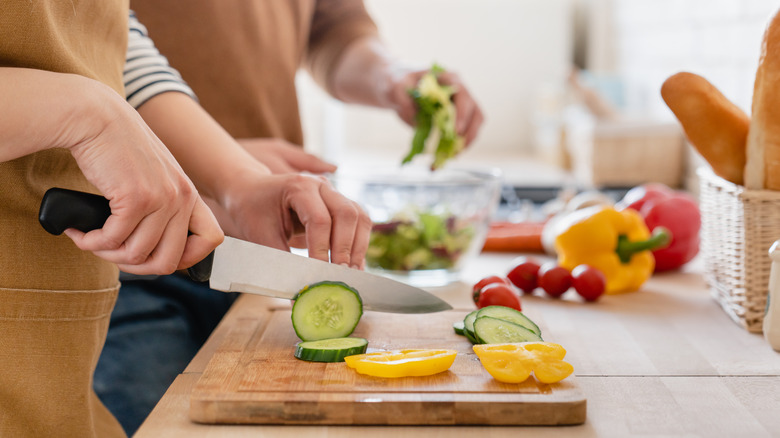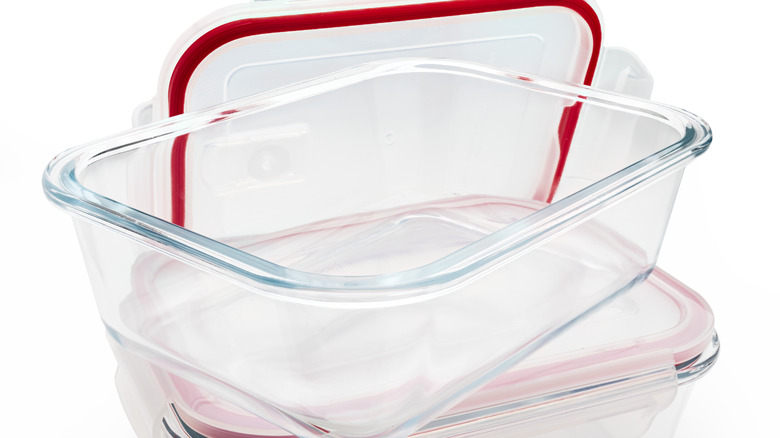14 Tips You Need To Simplify Your Weekly Meal Planning
Life in the 21st century moves fast. Between 50-hour work weeks, childcare, keeping up with emails and texts, maintaining relationships, and endless chores, who has time to cook anymore? For those who just need a moment to breathe, meal planning is the way to go. It's a money and time-saving alternative to ordering takeout or grabbing lunch at the cafe down the street. Health-conscious folks know that the only food you can trust to be truly healthy is the food you make yourself. But, even meal prepping can get complicated when you're up to your elbows in chopped carrots, chicken breasts, and pasta salad. There are, however, many tips you can use to simplify your weekly meal planning.
Whether you're meticulously meal prepping or planning big family dinners, the goal is simple: to spend less time in the kitchen and more time in the real world. That may mean making more time to hit the gym after work, or it could mean giving you extra one-on-one time with your family. Whatever the case, simplicity is the goal, and we have the answers.
Give yourself enough time to plan
Yes, it may seem counterintuitive to "simplify" your meal planning by taking up a weekend afternoon plotting, listing, configuring, and grocery shopping. But, the reality is that the more work you put in upfront, the less work you'll have to do in the long run. Having a solid plan leaves little room for error and frustration and can even save you loads of dishes down the road. The biggest mistake you can make when meal planning is going to the grocery store without a refined list and plan.
First, consider which meals you're planning for. Are you hoping to cover the full week with one grocery run? Do you just need to meal prep lunches to bring to work? Are you feeding a large family or creating single-serve portions? Whatever your jam, grab a piece of paper, or open the notes app on your phone, and get to work.
You'll need to know which recipes you'll be using, how many portions you'd like to make of each, and a list of the proportional ingredients. For the ultra-organized, list out which days you'd like to enjoy which recipes, and the blocks of time you'll have to make them. Be sure to target make-ahead meal recipes that last well in the refrigerator and include at least one slow-cooker recipe if you have the handy gadget at home.
Cook only what you need
Plotting out your week of meals beforehand can help to reduce food waste. Only you know how many portions of pasta bolognese you can tolerate before you'll never want to see it again. Especially if you're meal prepping for out-of-home lunches, it's important to add variety and keep portions reasonable. There's nothing worse than having to clean out a container of unwanted chicken salad when you finally arrive home after a long day of work.
If you know you can tolerate a full week of monotonous meals, more power to you. If you know that you tend to tap out at two, then let's not wishful think. Only make two portions unless you plan to freeze some for another week. This tip is especially helpful for those who live alone or dine and cook independently from roommates. For those with large families with growing, ravenous children, it might make sense to make a designated amount of leftovers so that your kids have healthy after-school mini meals to tide them over until dinner.
Always include a raw side dish
To simplify weekly meal planning, keep in mind that you don't have to cook everything from scratch. Yes, in an ideal world, you'd make scalloped potatoes and maple-roasted carrots as a side dish with your packed lunch or dinner. But, the reality is that cooking from scratch takes time and effort and isn't always the healthiest option. Now, before you get excited and assume we are talking about adding TV-dinner-style side dishes to your meals, think again. We are talking about the wonders of raw foods.
For both to-go lunch meal prepping and dining room dinners, be sure to supplement your dish with raw vegetables. For big families, this might mean putting out a large plate of baby carrots, chopped peppers, and broccoli florets with a bowl of hummus or dressing before dinner. These veggies can be prepped once, and then put out multiple nights until they are repurposed into a stir fry or omelet later in the week. For those who meal prep lunches, include a small Tupperware with a smear of dip on the bottom and a stack of your favorite cut veggie of choice. These raw vegetables are packed with fiber and nutrients, so they will help to fill you up and take only seconds to rinse and package.
Don't shy away from pre-made spreads and sauces
Yes, homemade sauces just tend to taste better, fresher, and heck, they are always customized to fit your personalized flavor preferences. But, just because you're batch cooking or meal prepping, doesn't mean you are stuck making everything from scratch. While meal planning helps to prevent the need for frozen dinners, takeout, and processed meals, we think that a little grocery store sauce or spread isn't the end of the world. Be sure to purchase from brands you trust (like your favorite store-bought hummus), but give yourself a break and simplify your weekly meal planning by going for the bottled stuff every now and again.
Most grocery stores carry local pre-made hummus. There are plenty of salad dressings lining the shelves that are to die for, and the good jarred marinara sauce might cost a little extra, but, wow, they've come a long way since Preggo. Just because you're a meal-planning extraordinaire doesn't mean you shouldn't use tools at your disposal, and it certainly doesn't mean you have to make everything from scratch like Gordon Ramsey.
Mix up your spices, but reuse ingredients
Wow, it seems like the menu at Taco Bell is endless. But, in reality, they are just really good at using the same simplified ingredients to whip up a whole variety of meals. Why not do the same?
If you don't love redundancy, but want to simplify your weekly meal planning, consider buying ingredients in bulk, prepping them in bulk, and then using them in different recipes. Grab a bunch of red peppers, wash and slices them all at once, and then use some raw slices in your salads and as a side with hummus, and roast the rest to add to your buddha bowls and to make into a roasted red pepper soup recipe. Cut and clean once, and use for multiple recipes.
Batch-cooking grains like brown rice and quinoa can save a lot of time and energy in the long run. Luckily, both grains can go with just about any meal, including breakfast. Use rice to make a rice pudding recipe for breakfast, save a few portions to serve your stew over, and then use up the rest to make an easy fried rice recipe. Alternate which days you enjoy these dishes, and since they are spiced and flavored so differently, you may never notice their reappearance.
Freeze an extra portion for late-night desperation
If your goal is to reduce the amount of takeout you're ordering during the week by meal planning, then you're on the right track. A top-tier backup plan for ensuring that goal is fulfilled is to keep extra ready-to-heat frozen dinner options available at your fingertips. This doesn't mean loading up on frozen pizzas, this means creating your own TV dinner-style meals to keep in the freezer for easy grabbing.
When you meal plan, try to include an extra portion of your favorite recipe of the week. In reality, it is so much less work to add an extra serving of ingredients to a preexisting dish, than to start a whole meal from scratch. If Moroccan stew is your gig, throw in an extra few handfuls of chopped sweet potatoes, onions, carrots, and raisins. Easy peasy. The second that stew comes off the stove, cool a single portion and pop it in the freezer.
Avoid the biggest mistakes your making when freezing leftovers, and be sure to label your container with the name, date, and top allergens in each dish. That way, next time you're just too tired to start chopping and sauteing, you can simply defrost a bowl of soup and get right to the eating part.
Utilize frozen foods
Let's say you're gearing up to make a big pot of carrot ginger soup to enjoy for a few days this week for lunch. Delicious and healthy, what a combo. Consider heading passed the produce section to the freezer aisle. Carrots are great, but they can take a while to scrub clean, peel, chop, and steam.
Give yourself a break and simplify your weekly meal planning by using frozen veggies. They come pre-washed, pre-prepped, and typically blanched or steamed. Steam-in-the-bag veggies can even save you from unnecessary dishes. In fact, the freezer aisle is a great place to turn to for most produce. Not only can pre-prepped vegetables save you time, but they are often less expensive. Contrary to popular belief, frozen vegetables are frozen with all of their glorious nutrients, so you won't be missing out on those vitamins and minerals.
Frozen proteins can also be a lifesaver, especially when buying in bulk. In fact, you should always have frozen vegetables and proteins in your refrigerator for cooking emergencies, and simply to make life a little easier.
Incorporate fresh fruit
There was no easier snack in the world than the basic apple. Firstly, who doesn't like an apple? They are sweet, crisp, nutritious, filling, and come encased in their own natural packaging. An apple takes about 10 seconds to rinse, or hey, just shine it on your shirt. Oranges, bananas, grapes, and pretty much any fresh fruit that doesn't need to be cut fits the bill.
If you don't already have a large bowl full to the brim with fruit sitting on your kitchen island, it might be time to invest in one. Fruit is loaded with natural sugars that help you stay alert and energized. Best of all, they take little to no prep time and can drastically simplify your weekly meal planning.
Meal preppers and lunch-packers take note. Be sure to purchase a variety so you can mix up your monotonous prepped meals. It's as easy as rinse, pack, and enjoy.
Mixing up protein doesn't always mean more work
Just because you're trying to be efficient with meal planning doesn't mean you need to eat chicken every single day for lunch. We can't stand seeing pictures of prepped meals that are exactly the same, day after day. Variety is the spice of life, so why narrow your options?
Although we don't recommend cooking fish and land proteins in the same pan, we don't think it's the end of the world to cook your chicken in a little bacon grease or steak fat. If you're a big fan of adding meat to your weekly plan, reduce the number of dishes you have to do by reusing cooking gadgets like pots, pans, and tongs.
Start with the fattier meats, and use their grease to flavor other meats. Create an assembly line of proteins and send them one by one through the pan. Enjoy chicken over your salad one day and slices of steak over buttered rice the next. There's nothing worse than getting sick of a flavor and then having to grab lunch out anyway — or letting it go bad in the refrigerator.
Stick to reliable recipes
If you're planning to cook a big batch of something, you'd better have a good sense if you'd like it or not. We've all been there, throwing away leftovers of a flopped recipe after it's fulfilled its obligatory five-day waiting period in the back of the refrigerator. For batch cooking, stick to reliable favorites that you know you and your family will enjoy for multiple days at a time.
That doesn't mean you shouldn't let your culinary creativity shine! Home cooks thrive off of testing out new recipes, adding their own flair, and inventing new favorites from scratch. But, you simply won't know if you're going to like a dish until you've tried it. Make a single portion or enough for the family to enjoy one night. If it's a flop, you've wasted less time in the cooking process, less money on ingredients, and less refrigerator space where it would shamefully sit until disposed of. Of course, if it's edible, you and the family can stomach it for a night, but let's not subject everyone to experiments day after day.
Call in reinforcements
Did you know that involving your children in the cooking process can not only boost their self-esteem but will also encourage them to enjoy their food more? Having your children meal prep with you is a fun way to help kids enjoy their school lunches more and can even encourage picky eaters to give those beans they've spent all afternoon chopping a decent try. Have small children do simple tasks like mixing or sorting and older children help with chopping and measuring (look at them utilizing those math skills!). If you don't have children, have your spouse give you a hand. If they are planted in front of the TV and it's their night to relax, bring them a bowl of asparagus to snap.
For those who live with roommates, encourage them to help out and then share your bounty. It's much easier to make a larger portion of food with two people than to each make your own individual meals. Sharing is caring and everyone will benefit in the long run.
If you live alone and there's no sign of calling in reinforcements, then throw on a podcast, chat on speakerphone with your mom, or run the TV in the background if you are able to stay focused on the tasks ahead.
Set realistic expectations
For those who have cleared their Sundays to shop, meal prep, and individually plate their meals for the week, good for you. That's a lot of work to do in one day, but if you're working with what little free time you have, then it just may be worth it. Those who have the ability to spread their workout over several days should take advantage of this flexibility.
Plan and grocery shop one day, then prep and cook the next. If you want to do all of your cooking in one day that's great, but for others, it might make sense to make meals the day you plan to enjoy them. If you find that big projects overwhelm you, or that you have trouble completing tasks then break it down.
Set realistic expectations for yourself, and lean into your capabilities. In some instances breaking up the work can keep food safe. In that same vein, always check how far ahead of time it's safe to meal prep your foods, and don't push the limits.
Include dessert
If you know that you have a sweet tooth, then don't forget to plan for dessert. Trying to "be good" and omitting it from your plan will just cause you grief and wasted time in the long run when you inevitably cave in and stop for a cookie or break into your children's Halloween candy stash. Spend time making homemade cupcakes or pack some candy. It simply means that if you crave a little something sweet after dinner, anticipate this desire and choose a dessert when you're a little less desperate for sugar.
Add dates stuffed with peanut butter, raspberries mixed with dark chocolate chips, or a yogurt cup drizzled with honey to your plan. Without going off the deep end (and face first into that old box of donuts in the breakroom), satisfy your cravings with something sweet, indulgent, and healthy enough so you won't feel bogged down. Hey, you might as well skip that Mcflurry on the way home from work to save yourself time and money.
Splurge on the right containers
While buying cheap containers might soften an immediate financial hit, it could end up costing you time, and even more money down the road. Cheap plastic containers are flimsy, take on the color and odor of food they've stored, break easily, and are typically not safe to use in the dishwasher. In addition, there are many types of containers you should never use to reheat food in the microwave or to freeze leftovers.
When you purchase containers look for types of plastic that are meant for food storage, are BPA-free, and can be used in the dishwasher, microwave, and freezer. Glass containers are even better and more durable. Be sure the lids fit snuggly to the container to reduce the introduction of new bacteria and to keep your refrigerator smelling fresh.
Food preppers should look for containers with multiple compartments to store both hot and cold foods, as well as containers that fit into their cooler boxes for transportation.
